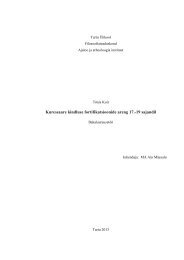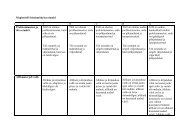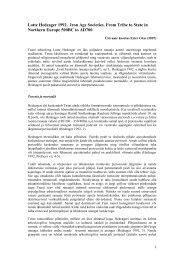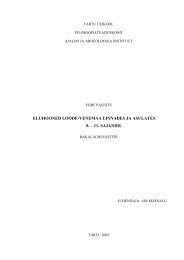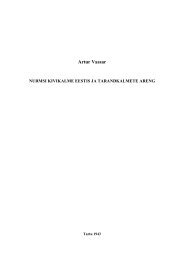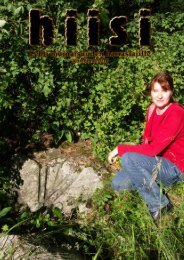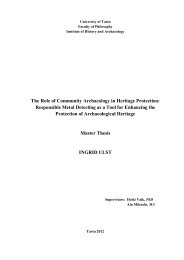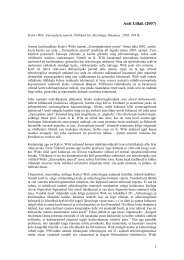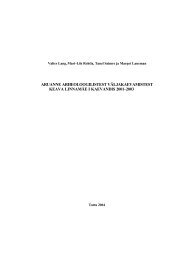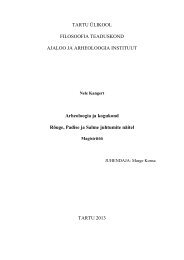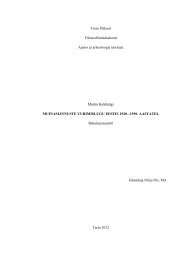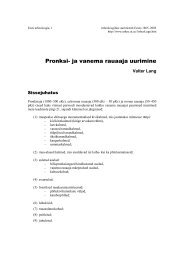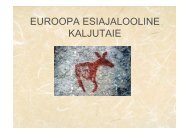PDF file (4 MB) - Arheoloogia Tartu Ãlikoolis
PDF file (4 MB) - Arheoloogia Tartu Ãlikoolis
PDF file (4 MB) - Arheoloogia Tartu Ãlikoolis
Create successful ePaper yourself
Turn your PDF publications into a flip-book with our unique Google optimized e-Paper software.
Modern Period. The collected material in general shows that the Uderna II settlement<br />
has been continuously inhabited from the 11 th century.<br />
The Uderna II Settlement Site in the Early Modern Period<br />
The Livonian-Russian war which begun on the second half of the 16 th century, marks<br />
the beginning of the Early Modern Period in Estonia. The long period of war activity<br />
has only left one specific type of artifact into the archaeological material of village<br />
Uderna - green-glazed greyware from Northwest Russia. From the written sources, far<br />
more information can be obtained. This information shows that the community of the<br />
village suffered greatly from the almost century-long period of war activity. During the<br />
period, and the years following, almost all of the families in the village were destroyed<br />
by war, famine or the epidemics, or possibly, left their homes to live elsewhere. This did<br />
not mean that the village was left uninhabited, though – it seems to become filled with<br />
newcomers (some of them probably foreigners) quite fast after the peace was restored.<br />
This process is quite typical to Estonia in the 17 th century.<br />
There are also some other changes in the consistence of the archaeological material of<br />
the settlement site. From the beginning of the Early Modern Period, there are<br />
considerably less ornaments among the artifacts. The weapons practically seem to<br />
disappear from the village. And, lastly, the villagers start smoking. From the written<br />
sources, one more change can be seen – two villages of Uderna are joined into one<br />
sometime during the 17 th century. This is probably caused by them going into the<br />
ownership of one family and manor.<br />
The Great Northern War that took place in the beginning of the 18 th century was<br />
probably as devastating to the village as the Russian-Livonian war had been. However,<br />
no written sources or archaeological proof exist to confirm this. A visible change comes<br />
into the archaeological material from the second half of the 18 th century – almost all of<br />
the coins found from the settlement site are from that period. A fork, a table knife, and<br />
fragments of faience cups probably also belong to that (or a later) period. These artifacts<br />
also seem to refer to the possible wealth and high status of the family using them.<br />
112



